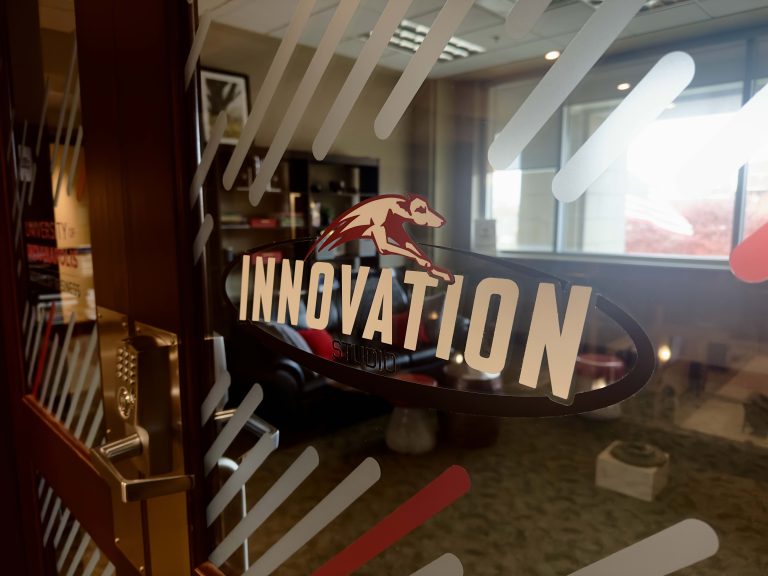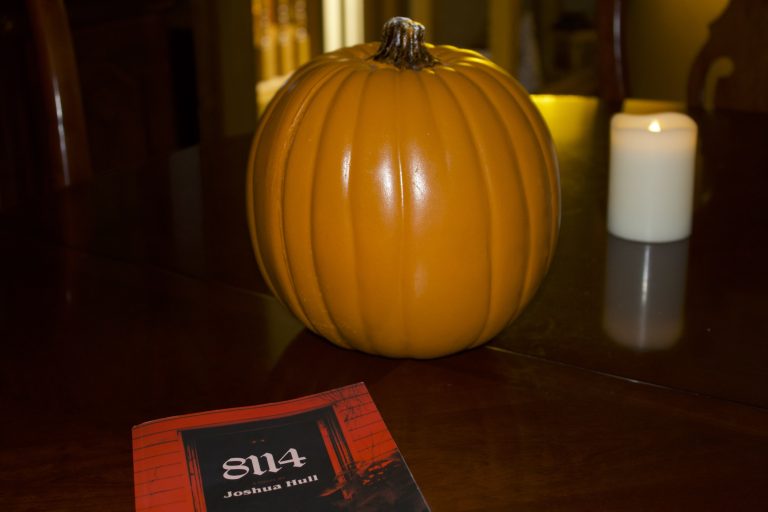Editor’s note: Feature Editor Michael Harrington assisted with the sourcing for this article.
While roaming around The University of Indianapolis, it is nearly impossible to walk around campus without spotting some kind of work of art, according to the school’s Sculpture Walk web page. In fact, Co-Chair and Professor of the Art & Design Department and Campus Art Curator Jim Veiweigh said the university has 26 sculptures and “well over a hundred” 2-D art pieces on display. These include works from current students, alumni, current and past faculty and famous artists—either purchased or donated. The Department of Art & Design recently has been reviewing its collection and reimagining their displays, according to Assistant Professor of Art & Design and art history expert Noni Brynjolson.
Veiweigh said UIndy uses the campus and its buildings as a gallery in the absence of a permanent museum. And, like a museum, the university has a large assemblage of works.
“The university has a really extensive collection of artwork and we don’t have a permanent museum to put it in,” Veiweigh said. “And so basically what we’ve been able to do then is use the hallways of the buildings as museum spaces in a way so that as students, faculty, visitors to campus walk through, they can see all kinds of examples of cool artwork that they might have to go to an art museum or gallery to see.”
Works from notable artists such as T.C. Steele (a Hoosier), Thomas Hart Benton, Phillip Pearlstein, Jim Dine, Charles Alston, Robert Motherwell, and even Rembrandt are in the university’s collection, according to Veiweigh and Brynjolson.
However, art on university campuses is not a concept exclusive to UIndy. Institutions such as Dartmouth College, the University of Alabama, Princeton University and many more have web pages dedicated to the arts around their campuses. Fine art news website Art & Object states, “Public art on university campuses are the physical embodiment of institutional missions, and help to contribute to the creation and maintenance of the places where the community can learn, live and dialogue, within an environment that is rich in meaning.” Brynjolson said the art around campus has several benefits and purposes for UIndy and its community.
“So I think that is one of the bigger roles that art can play in our society is just to get us thinking about the world around us in often a critical way where we ask questions, we learn to see things differently,” Brynjolson said. “We appreciate the insights and perspectives of others. And I think also I would add to that, just not for the art majors on campus, but for anybody who’s interested in art and culture, just getting the chance to see some of those works in person.”
Campus art can be included in the umbrella of “public art,” Brynsolson said, which The Association of Public Art explains as, “Placed in public sites” and “this art is there for everyone, a form of collective community expression.” She also said the art on campus can serve to “create a sense of community” and spark conversation between viewers.
“It’s historically been connected to different cultural practices, religious practices and worship practices where people come together and are engaging in these things that help them feel like part of a bigger community,” Brynjolson said. “And I think part of that is connected to more recent turns towards the public in a lot of modern art. So I think it’s exactly that. It’s that desire to make art more accessible, to try to reach a wider audience.”
Students, faculty, staff, visitors and more can see many of the artworks on campus are housed in the Christel DeHaan Fine Arts Center, the home of the Department of Art & Design. Vewieigh said the university’s art collection impresses more people than just the UIndy community.
“UIndy is very lucky to be able to have such a great collection of artwork that you basically just walk down the hall and can be exposed to,” Veiwiegh said. “The Department of Art & Design is nationally accredited. When our accreditors come in, we are always complimented and the evaluators are amazed that the collection we have is just right there on the walls for people to see.” The Department of Art & Design is currently making art more accessible through a free public gallery highlighting faculty art to celebrate its 100-year-anniversary in the Christel DeHaan Fine Arts Center, according to Brynjolson. The exhibition opened in October and is scheduled to end on Dec. 22.







